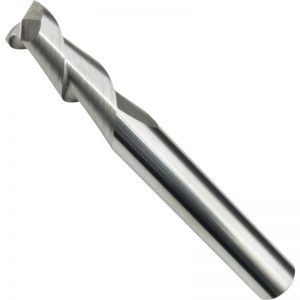The wrong answer may result in spending extra time in the rough process, resulting in loss of revenue at work, and, worse, a backup of tasks on the same machine. In addition, using the wrong tool to coarsen causes a headache for the final operation, and it takes an extra time to balance the remaining inventory before finishing the processing accurately.
Rough tools in a variety of shapes and designs, but for the sake of simplicity, this article will discuss the square shoulder end of the indexable milling cutter and buttons (copy), which is the most common and most effective market, gm’s rough tools.
The side – side milling cutter usually has a parallelogram insertion, with two cutting edges. This type of tool creates a 90-wall, similar to a solid-square end milling cutter. Most of the end milling cutter provides the choice of multi-angle radii, making them a common tool for many rough machining, as well as the finished application. A button cut, sometimes referred to as a copy factory, has rounded inserts that provide 4-8 cutting edges. This tool forms a large radius at the bottom of the incision, which is beneficial to the processing circle or Angle shape. Button cutters also have a variety of styles, with axial rakes, insert clips and insert size changes.
So, how to choose? Let’s look at the various factors involved in the process and the pros and cons of each tool design.
The shoulder tool can cut the depth of the cutting depth, so it is easier to consume the available horsepower than the button factory. The exception here is the extremely high feed rate, some of which are capable, and the square mill is not. In some cases, according to the inserted I.C. (PI), the button mill can run each tooth over 0.050 inches (1.27 millimeters) of feed, with a depth of about 0.050 (or more). In these cases, the metal removal rate is far greater than the capacity of most of the shoulder tools, but the power consumption will increase proportionally.
